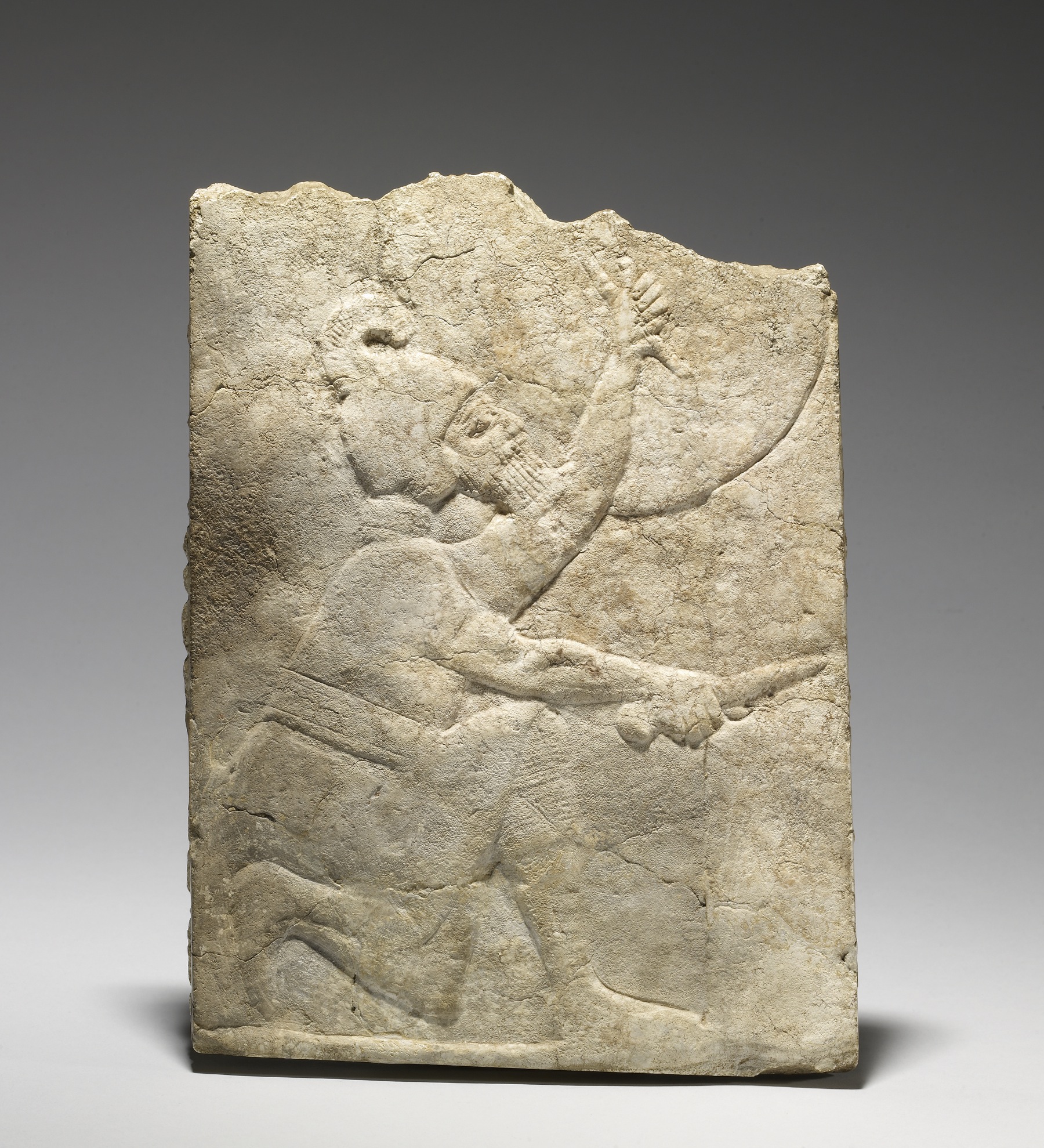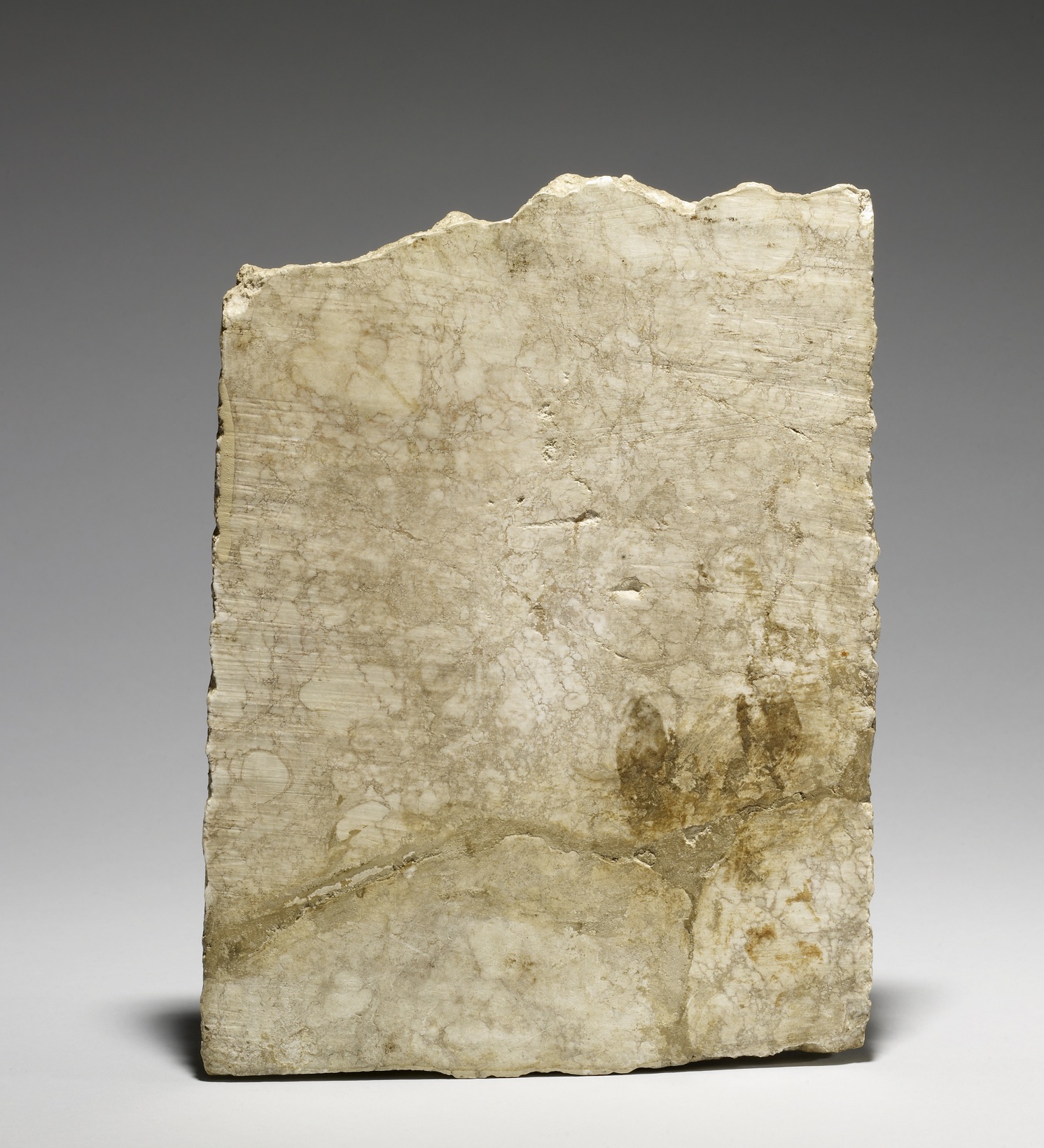Relief of a Kneeling Soldier
(Ancient Near East )
This relief from King Ashurbanipal's palace at Nineveh shows a Neo-Assyrian soldier kneeling next to a besieged Elamite city wall. Holding his round shield over him for protection, he scrapes at the mud-brick fortification with his dagger in order to weaken the structure. During Ashurbanipal's reign in the final years of Assyria's military glory, large-scale siege scenes covered the palace walls.
Provenance
Provenance (from the French provenir, 'to come from/forth') is the chronology of the ownership, custody, or location of a historical object. Learn more about provenance at the Walters.
[Nineveh, North Palace, Room F, slab 15, uncovered ca. 1854-56]; Ugo Jandolo, Rome, [date and mode of acquisition unknown]; Joseph Brummer, New York and Paris, 1925, by purchase [Brummer inv. no. P2318]; Henry Walters, Baltimore, 1927, by purchase; Walters Art Museum, 1931, by bequest.
Conservation
| Date | Description | Narrative |
|---|---|---|
| 1/1/2000 | Treatment | cleaned |
| 3/12/2001 | Treatment | other |
Measurements
H: 11 x W: 7 7/8 x D: 1 in. (28 x 20 x 2.5 cm)
Credit Line
Acquired by Henry Walters, 1927
Location in Museum
Not on view
Accession Number
In libraries, galleries, museums, and archives, an accession number is a unique identifier assigned to each object in the collection.
In libraries, galleries, museums, and archives, an accession number is a unique identifier assigned to each object in the collection.
21.6






